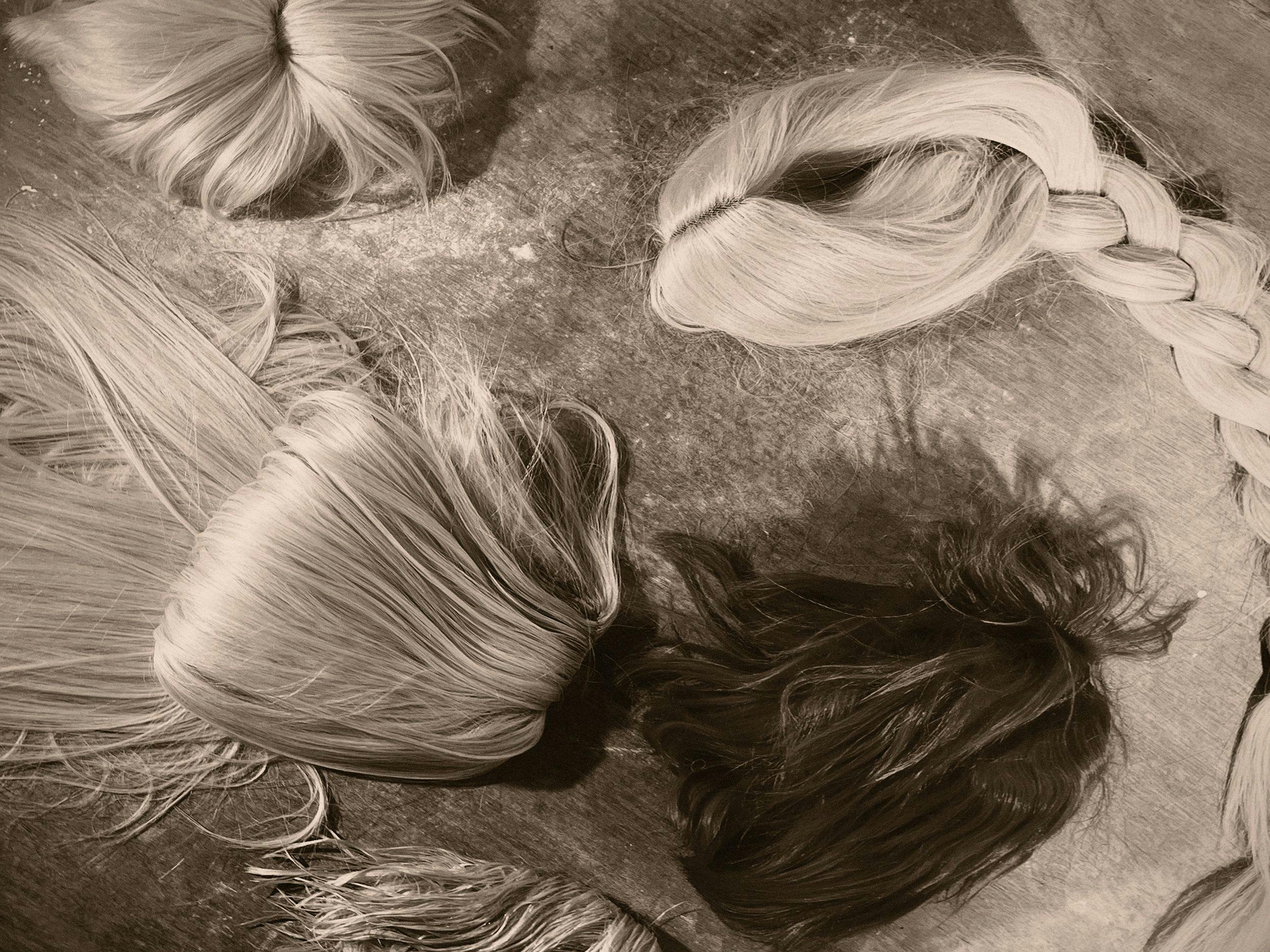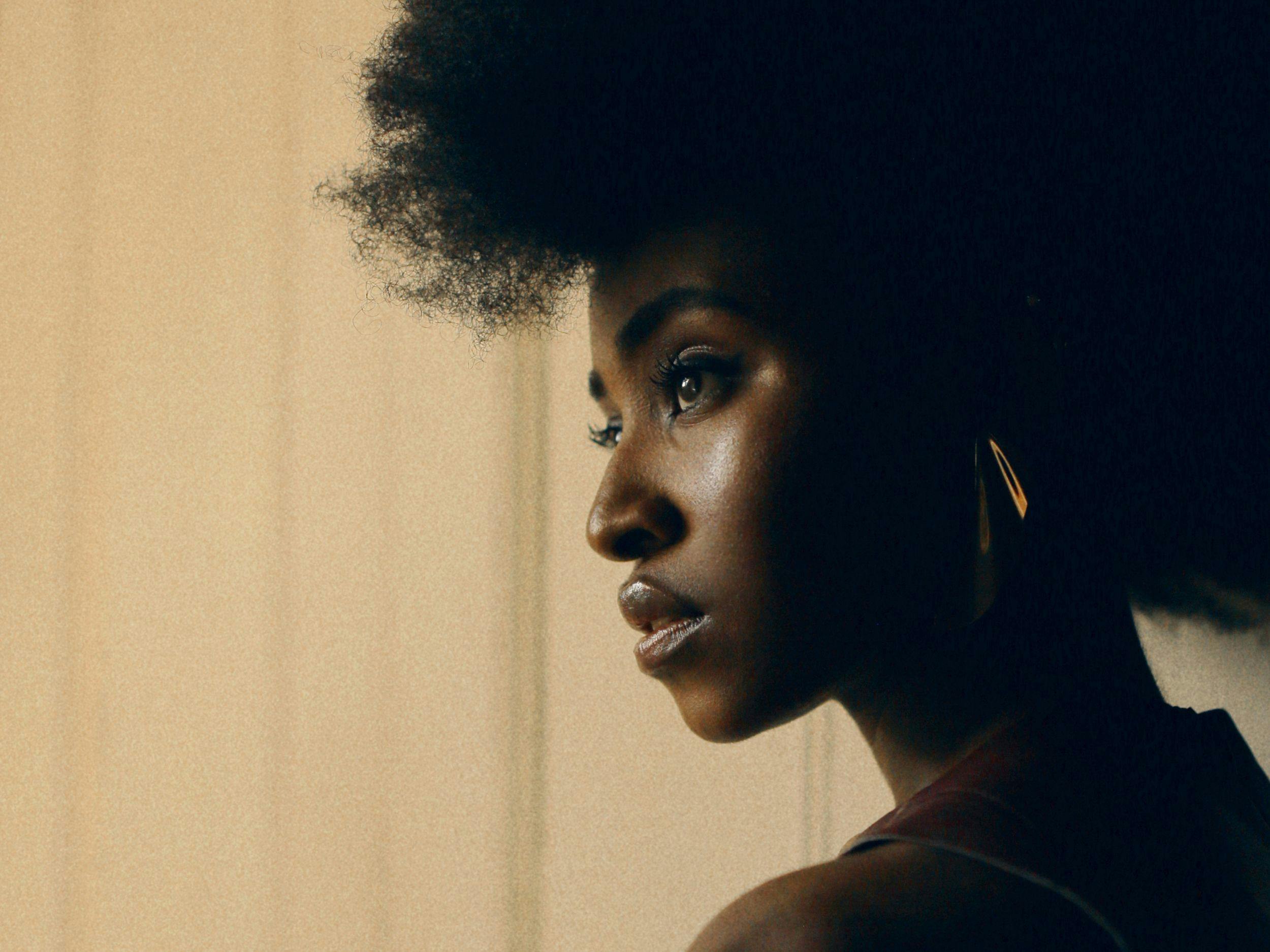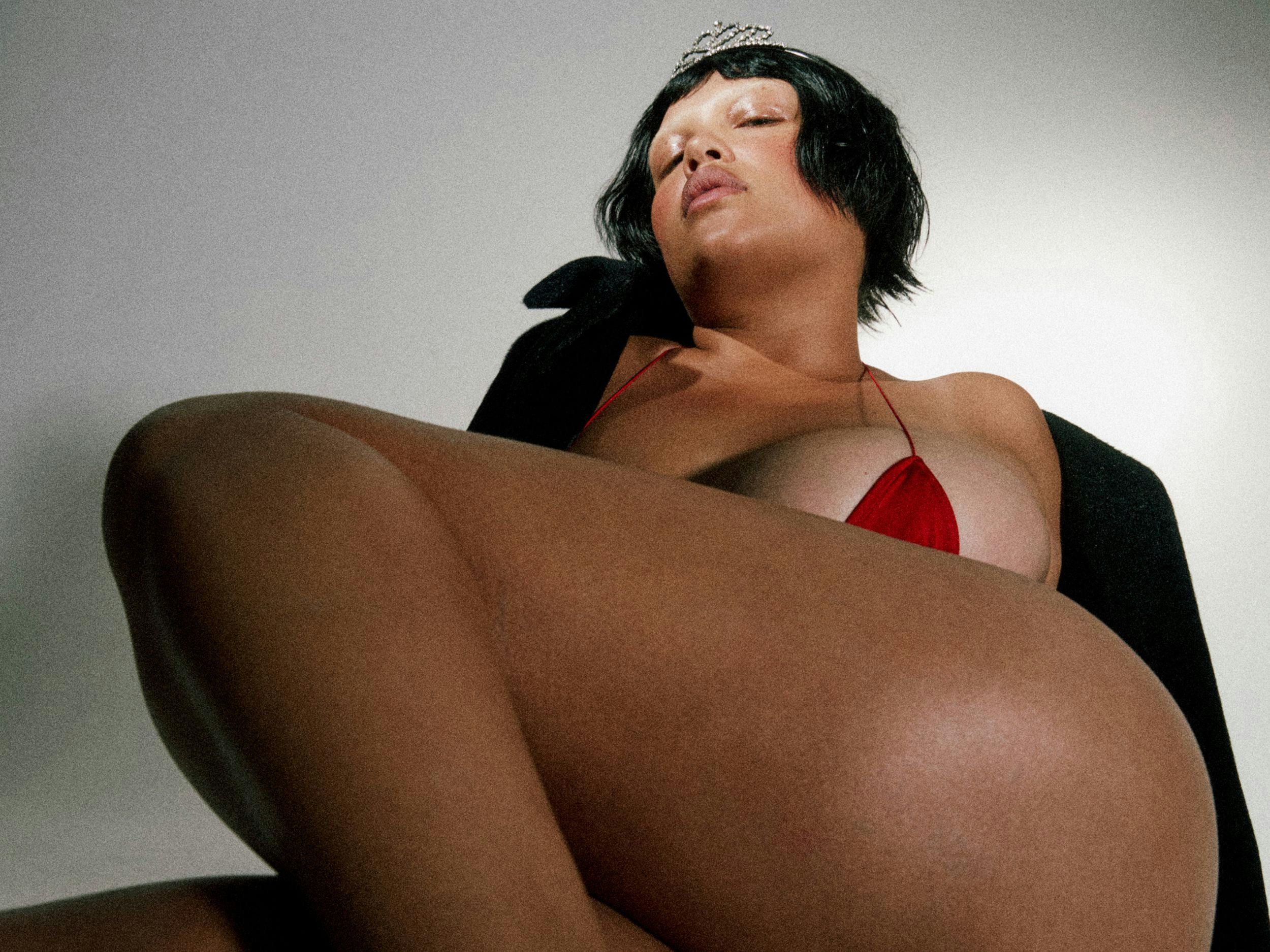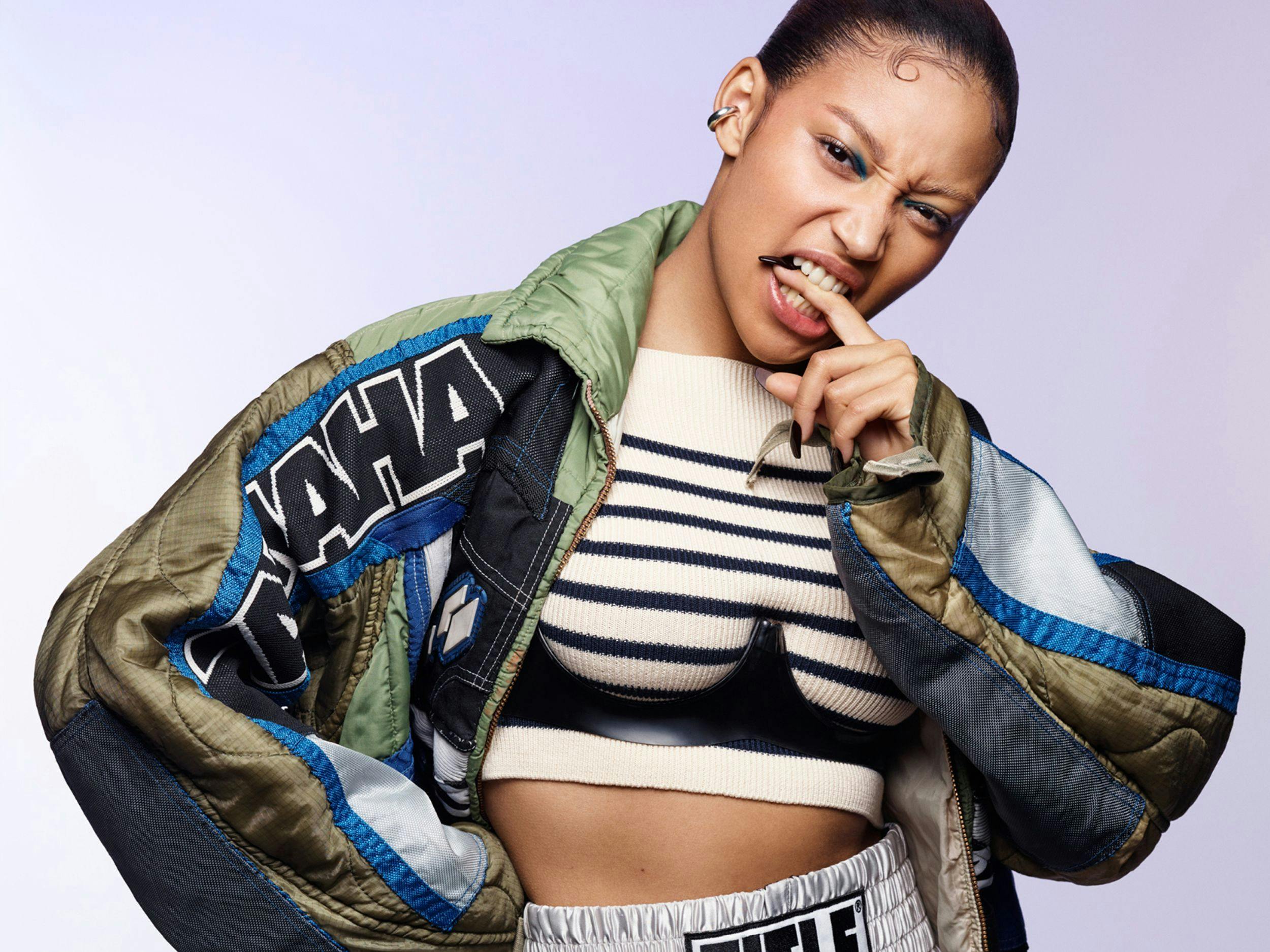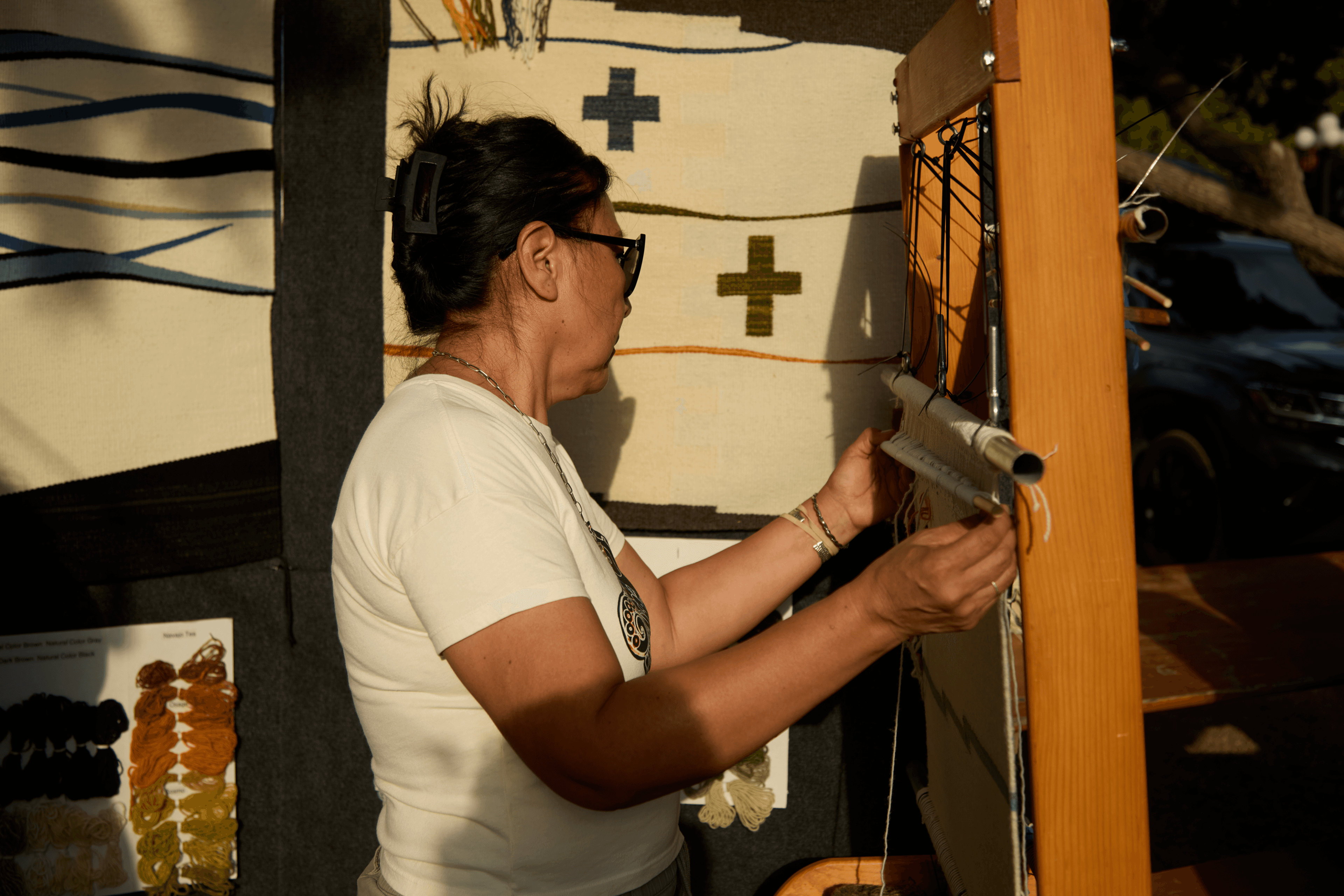
HOSH Finds New Canvases for Native American Art
Against the backdrop of a desert sunset on a balmy mid-August night in Santa Fe, New Mexico, the Native American creative platform HOSH (pronounced wo-sh) celebrated its local launch with a laidback soirée at the historic El Rey Court hotel. The Cherokee singer Ken Pomeroy and Dakota McDaniel serenaded the crowd, which was settled comfortably into the grass. Kinsale Drake, founder of the NDN Girls Book Club, floated through the crowd. Relaxed, elegant, and full of community, it was a fitting way to celebrate HOSH, a new project from Diné weaver and renowned fiber artist D.Y. Begay and Tom Tarica.
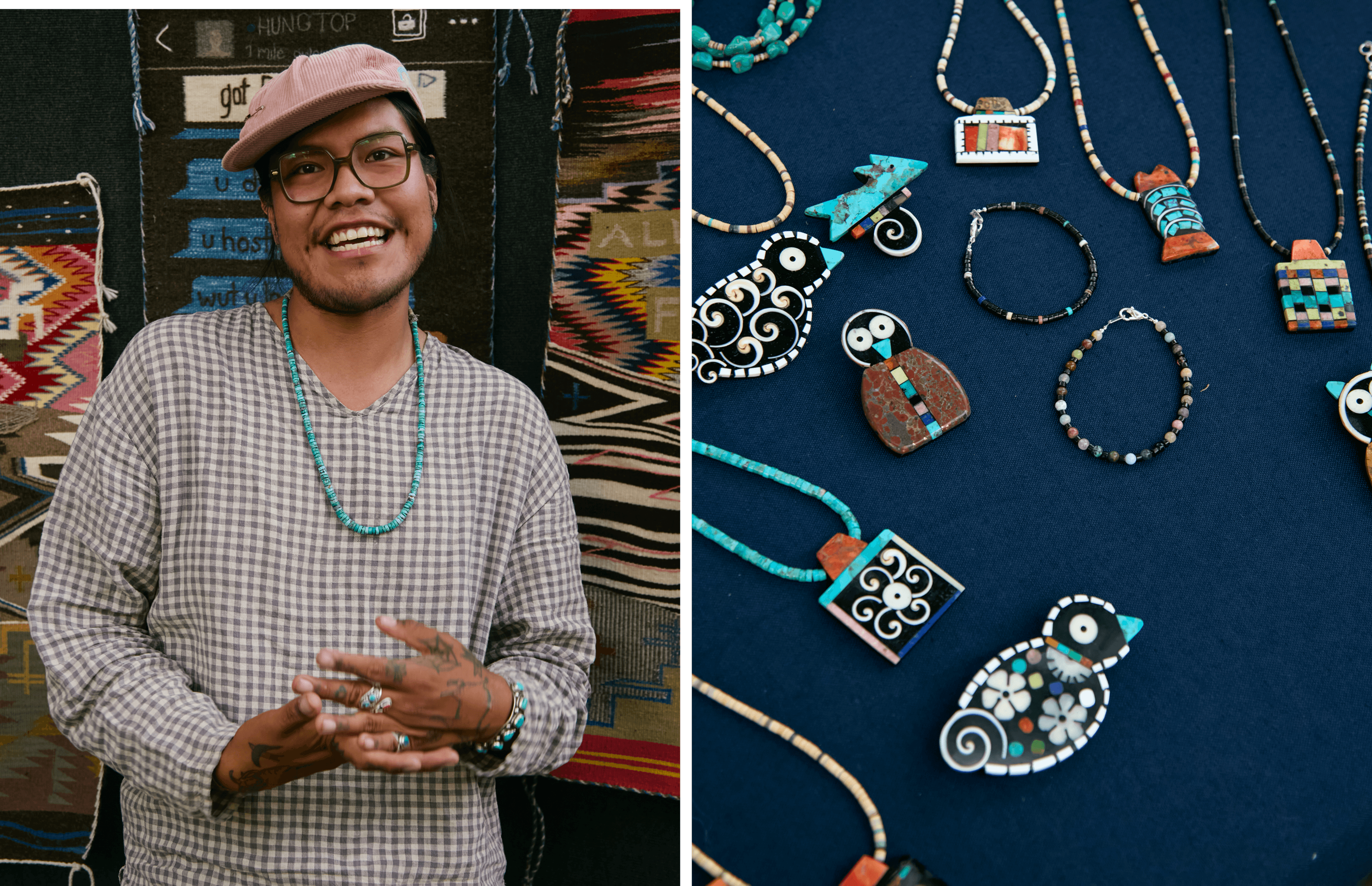
Begay and Tarica launched the brand in New York in June, overlapping with the last few weeks of Begay’s Smithsonian retrospective, with the purpose of celebrating Native American creativity through new canvases, predominantly in the lifestyle sphere. For the moment, that means t-shirts—basic cotton jersey tees dyed with natural indigo, cochineal, or pomegranate; and tees and hoodies featuring prints from a selected cohort of Native American artists. Each item is produced in Los Angeles from cotton grown, spun, and knit in the U.S. The prints are adapted from existing jewelry and designs created by artists including Mike Bird-Romero, Mary Louise Tafoya, and Craig George. Other artists on HOSH’s roster include Begay’s sisters and fellow weavers Berdine Begay and Berdina Charley, mixed media painter Tony Abeyta, weaver Tyrrell Tapaha, and potter Jared Tso.
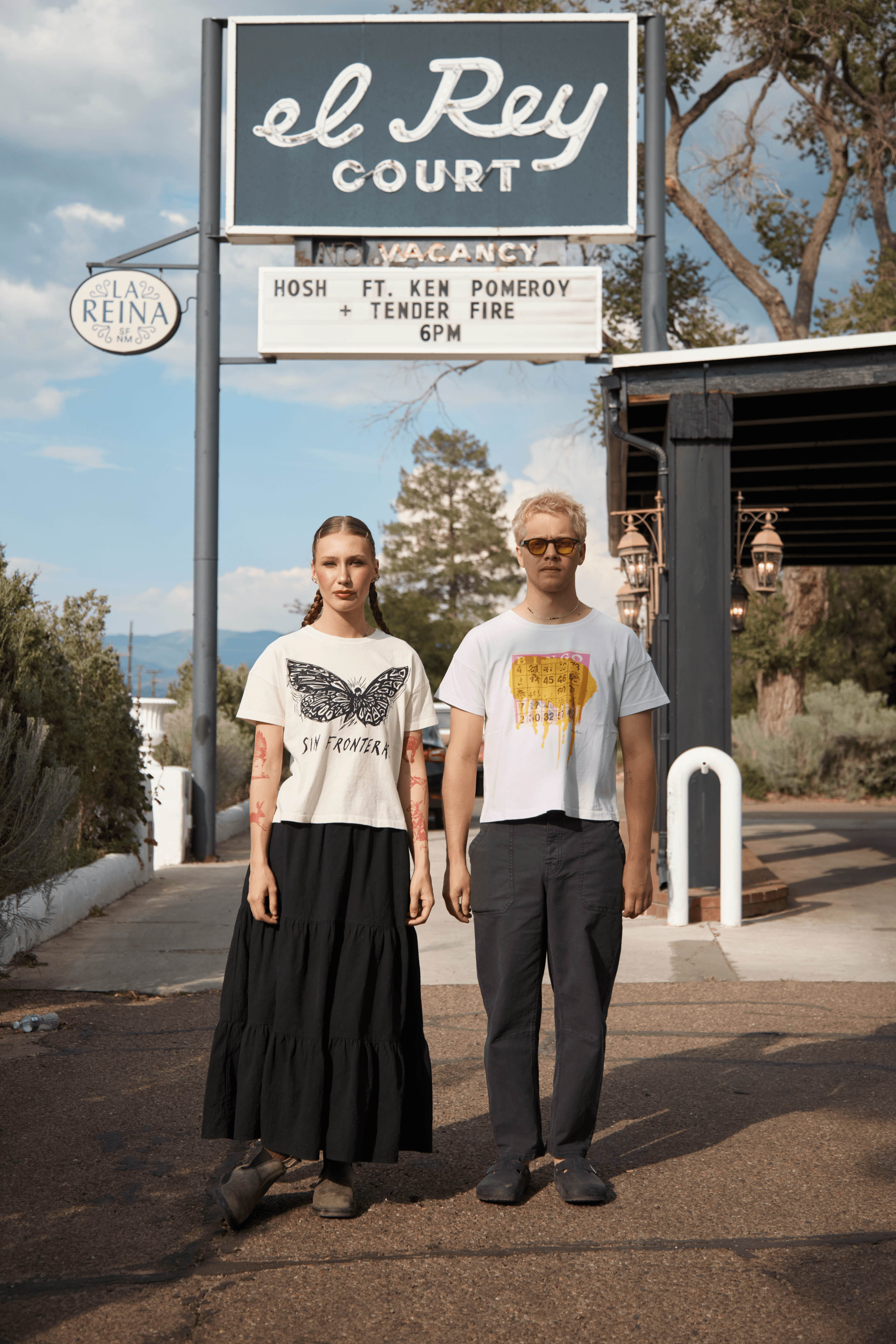
Tafoya had driven in from Kewa (Santo Domingo) Pueblo, between Albuquerque and Santa Fe, together with her husband Lorenzo, her daughter May, her granddaughters, and their blue heeler puppy. Flipping through a small photo book, she showed me photos of the stones she had selected at the Tucson Gem and Mineral Show earlier this year, an experience she described as “like being a kid in a toy store.” Tafoya, who was taught by her parents and has been making jewelry since the age of ten, doesn’t draw any of her designs. Instead, she cuts the large raw stones she brings home from Tucson—more like rocks, really—into pieces, some as small as a grain of rice, then lays them on her desk and lets her intuition guide her. The result is intricate mosaic arrangements of turquoise, shell, jasper, and more, laid into the form of flowers, fish, or Tafoya’s trademark, a whimsical butterfly, that translate nicely into striking, bold graphics that look good on a t-shirt.
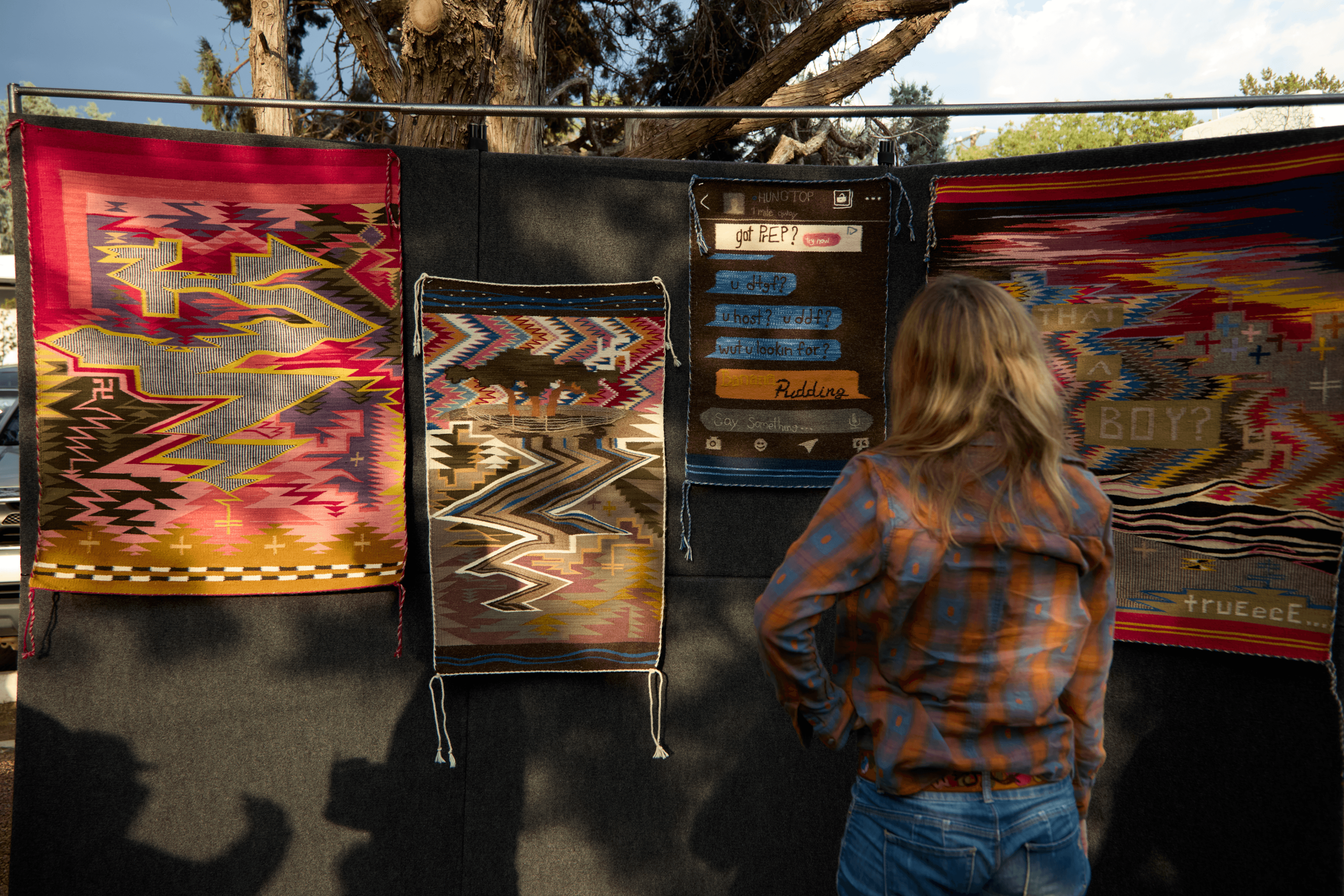
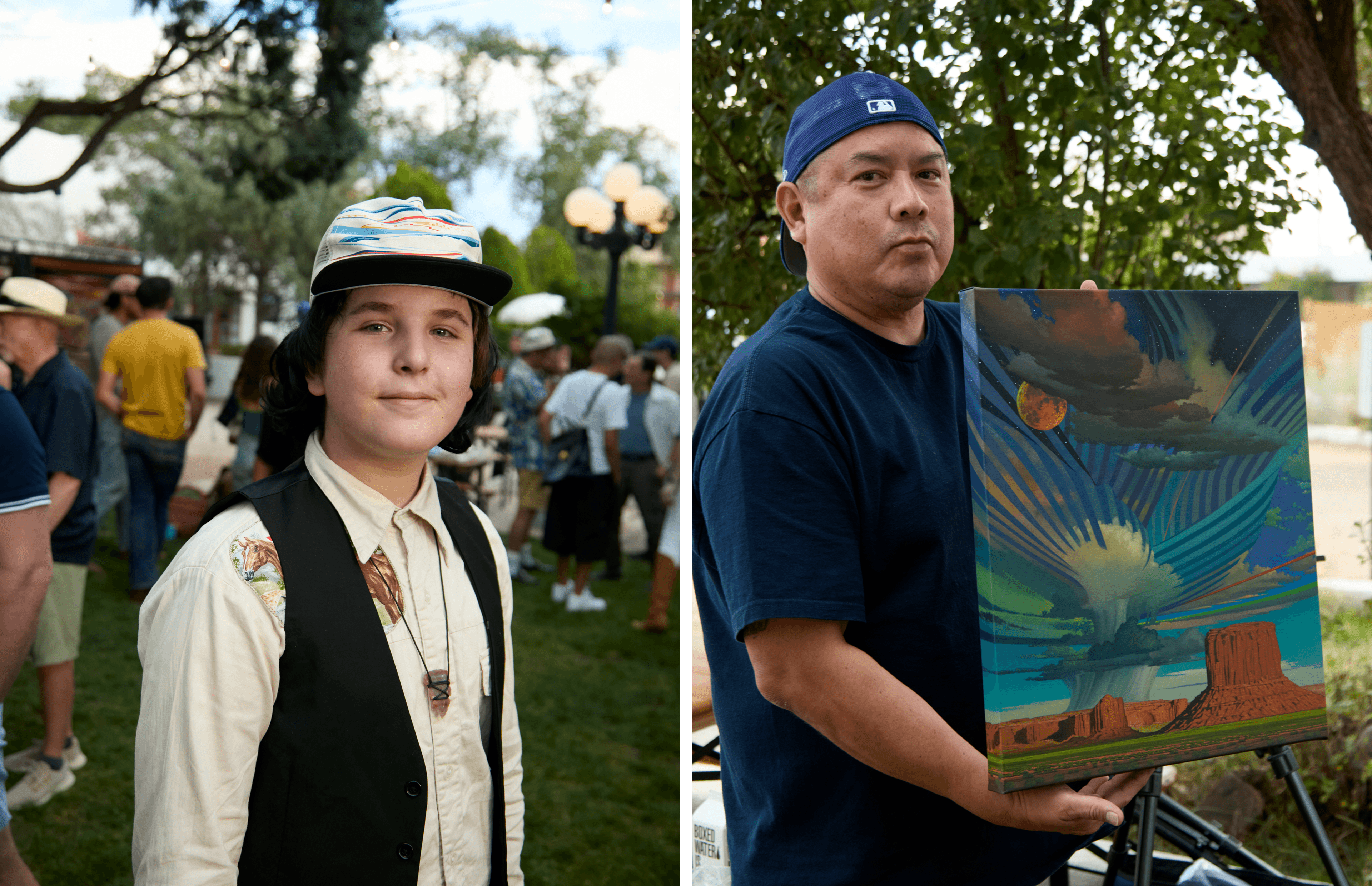
Next to her, DY’s sisters Berdine Begay and Berdina Charley showed how they comb the wool from Charley’s flock of churro sheep. Churro sheep have a history that is closely intertwined with Diné resilience and resistance, and their wool ranges from creamy white to charcoal gray to a brown so dark it verges on black. As the fourth generation in the family to weave, the sisters dye the different shades of wool with Navajo tea, indigo, purple onion skins, or cochineal, creating a painterly palette to weave into visually meditative tapestries. Translated to HOSH’s t-shirts, the designs turn into block patterns or colourful motifs, with the textures and colors of the natural materials shining through in the print.
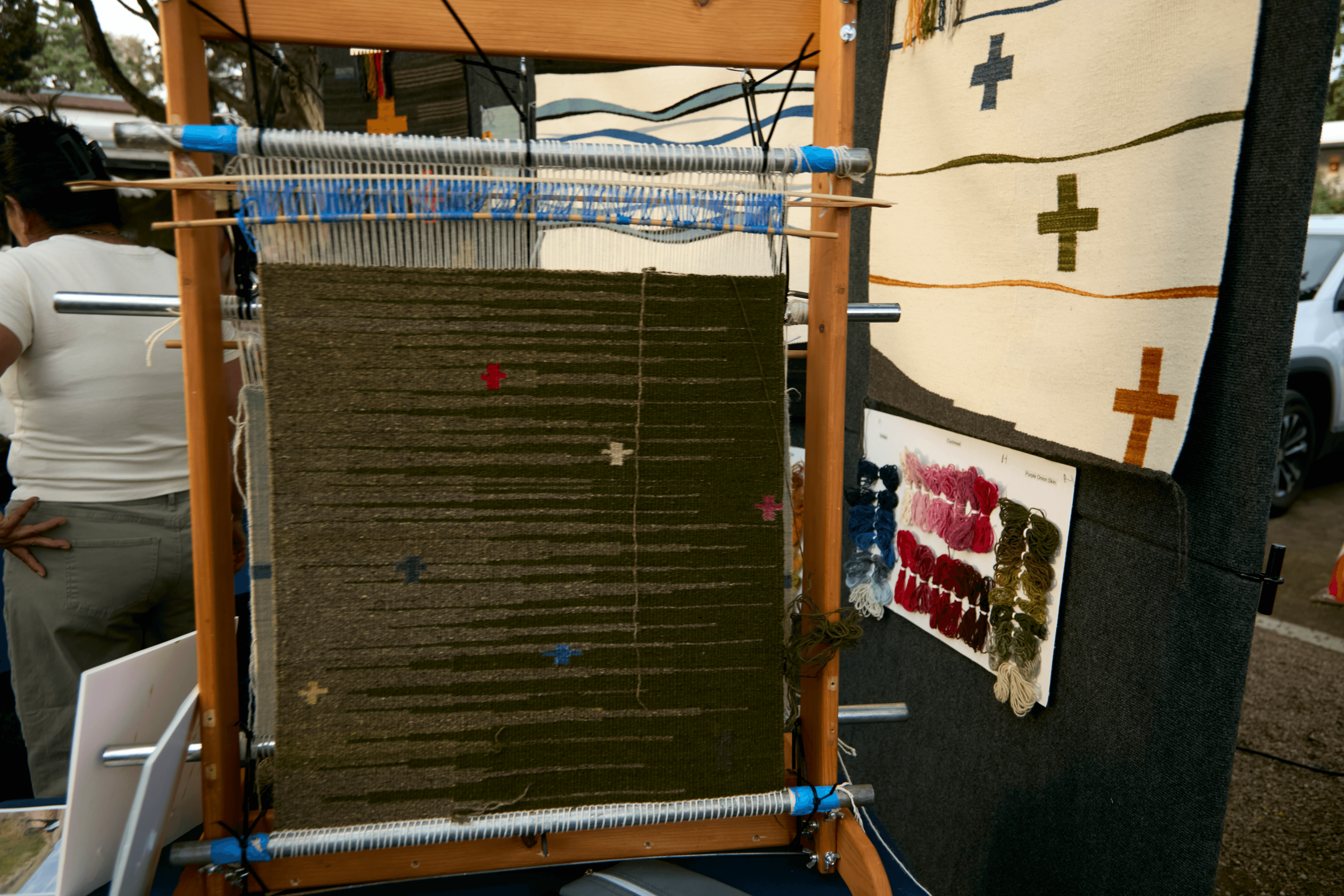
That wasn’t all—sixth-generation Diné weaver Tyrrell Tapaha displayed his playful, tongue-in-cheek tapestries with lines like “Got Prep?” or “u host? u ddf?” or “All that for a BOY?”, while potter Jared Tso and artist Marcel Dzama, a friend of Tarica’s, signed posters to mark the occasion. The small courtyard felt like a gallery that night (which stands to reason—Tarica is also an art collector), where not only were the depth and breadth of contemporary Native art and talent on show, but so, too, was the sense of community and a celebration of history and culture in movement. It felt apt for a project looking to expand how Native American art is worn, displayed, seen, and appreciated. And it felt inspiring—when I caught up with Tafoya at the Santa Fe Indian Market two days later, I asked how she felt about seeing her designs on t-shirts. “I get excited,” she said. “Like, ’Oooh! That’s my design.’”
For more information, please visit HOSHart.com.
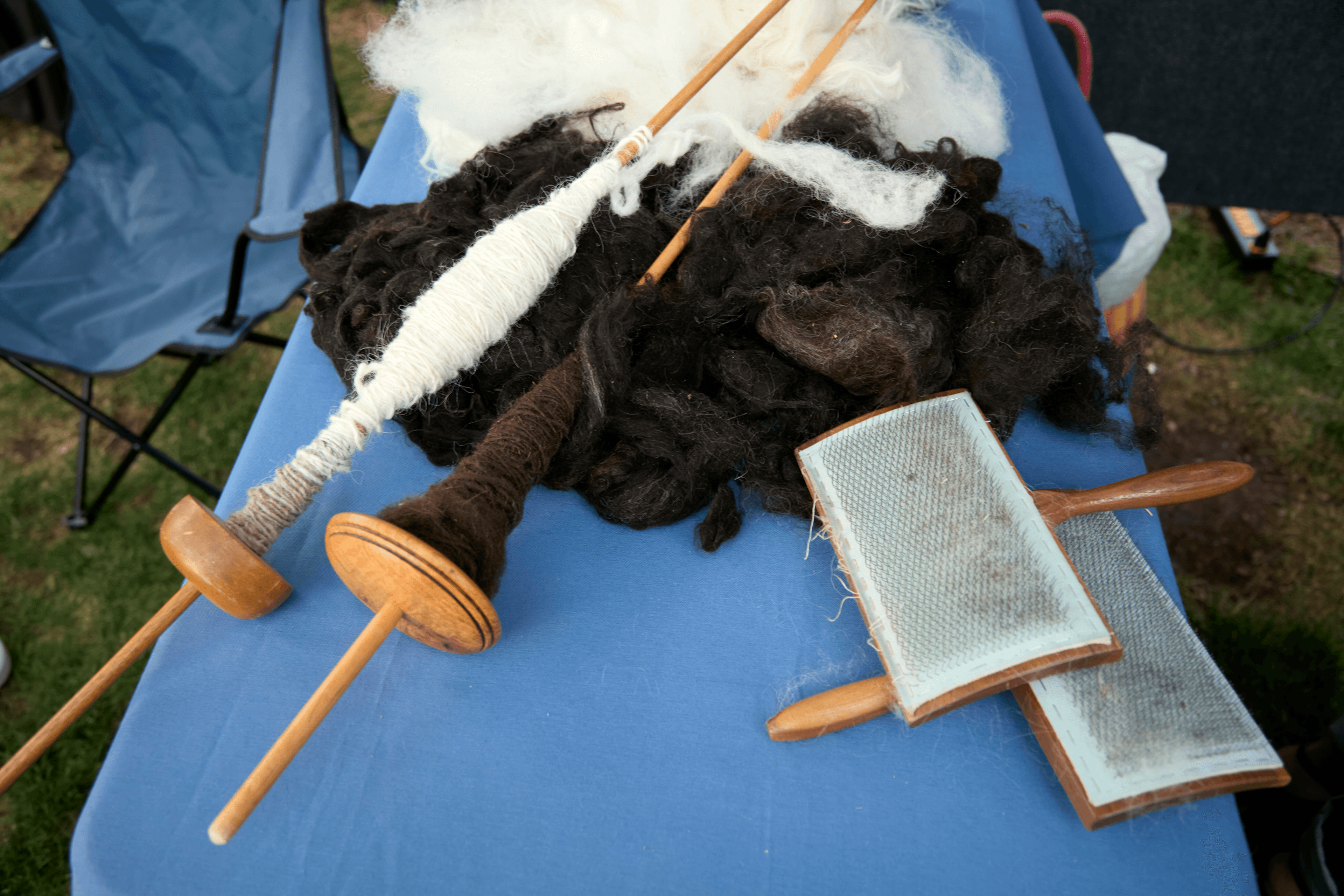
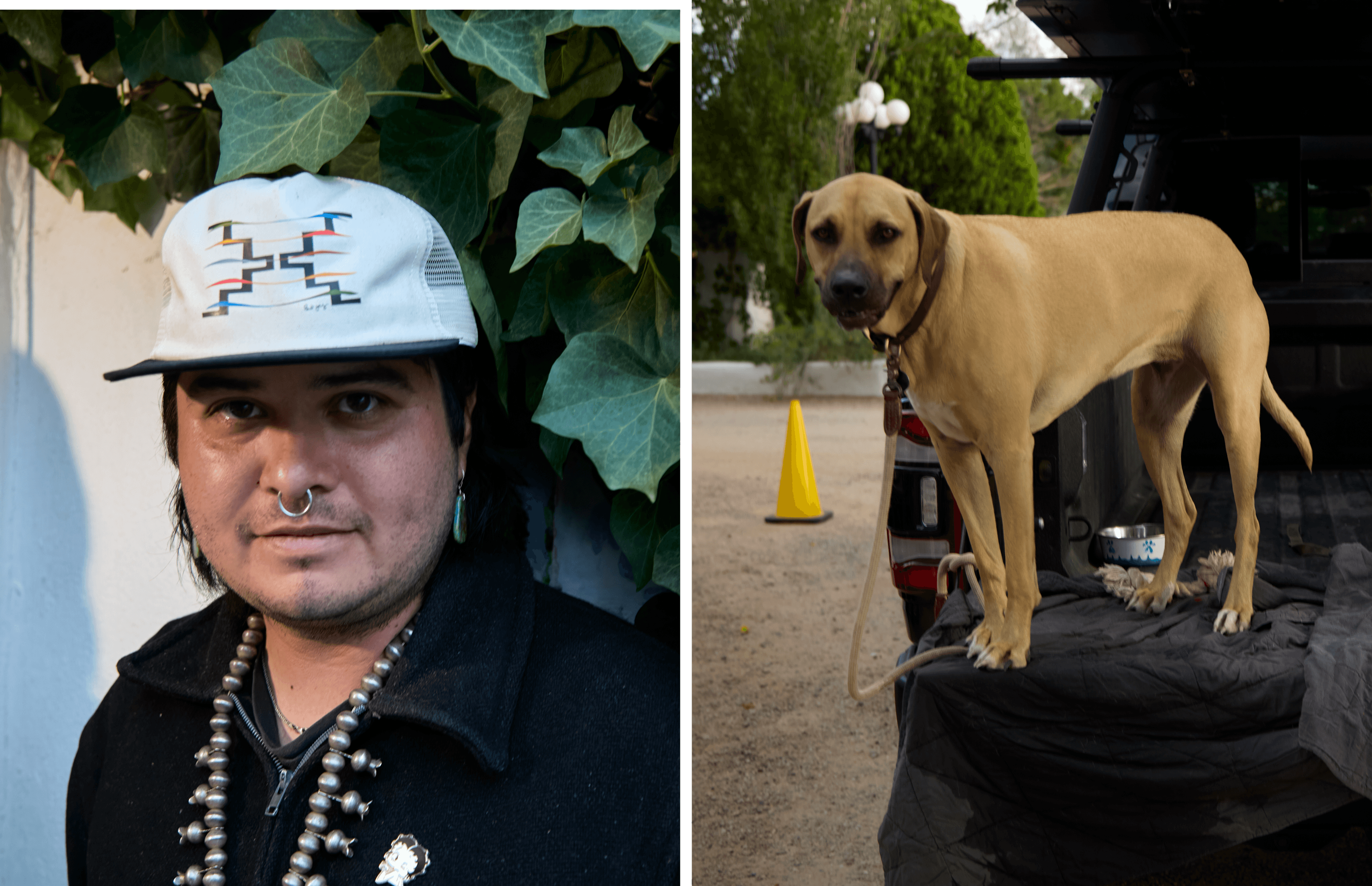
As a nonprofit arts and culture publication dedicated to educating, inspiring, and uplifting creatives, Cero Magazine depends on your donations to create stories like these. Please support our work here.
